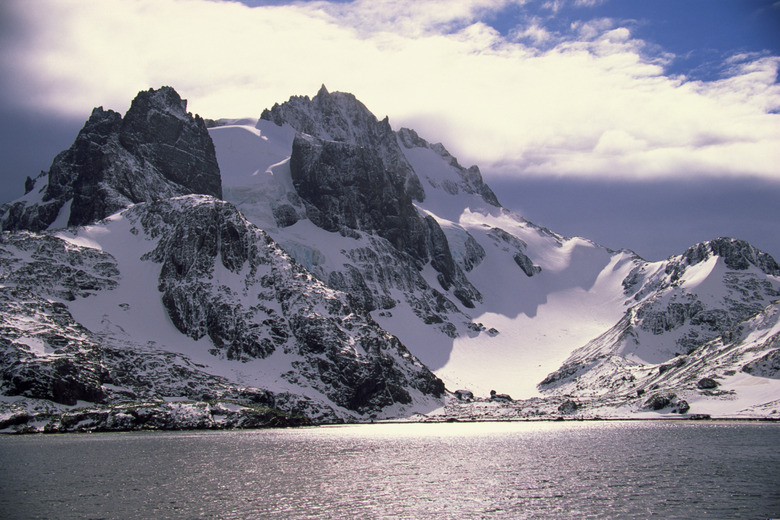Abiotic & Biotic Factors Of Polar Regions
The polar regions encompass the areas of the globe surrounding the North and South Poles that lie within the Arctic Circle in the north and the Antarctic Circle in the south. Conditions at the poles are harsh, but the polar regions are far from lifeless. The interaction between living and nonliving things form the framework of the ecosystems in this biome.
Tundra Biome
Tundra Biome
The ecology of the polar regions is classified as tundra. Cold temperatures, little precipitation, treeless plains and a lack of biodiversity define this biome. The growing season is extremely brief, and populations can vary dramatically based on the availability of resources at a given time. The Arctic tundra comprises the North Pole, found in the ice-covered portion of the Arctic Ocean, and the northernmost coasts of North America, Europe and Asia. The tundra of the South Pole region includes the continent of Antarctica and the surrounding Antarctic islands.
Biotic Factors
Biotic Factors
The Antarctic tundra has less diversity than the array of terrestrial species in the Arctic. Only a few species of moss, algae, lichens and flowering plants live here. The sparse number of terrestrial species includes mites, ticks and a species of wingless fly. Most animals in the Antarctic region live in or near the ocean. Marine animals include:
- whales
- seals
- penguins
- squid
- fish
- tiny krill
Abiotic Factors
Abiotic Factors
Abiotic factors affecting life in the polar regions include temperature, sunlight and precipitation. The top layer of the ground remains frozen year-round, which prevents the growth of plants with deep roots such as trees. The poles receive weak sunlight while tilted away from the sun. Reduced daylight for half of the year limits the types of plants that can grow in this environment. When tilted toward the sun, the increased hours of daylight fuel rapid growth as plants and animals capitalize on extra hours of daylight. Despite the presence of so much snow and ice in the polar regions, these areas do not receive a lot of precipitation and are like cold deserts.
Ocean Currents
Ocean Currents
Ocean currents are an important abiotic factor in the Arctic and Antarctic biomes because much of the biodiversity around the poles is based on marine life. Ocean currents carry nutrients and small organisms that form the food supply for organisms of these ecosystems. In cold ocean water, ice that forms on the surface causes an increase in salinity in the surrounding water, which increases its density. The dense, saltier water sinks, allowing less salty water to circulate. The flow of water circulates nutrients and carbon dioxide. Nutrient-dense water at the bottom of the ocean is brought to the surface by upwelling currents to provide resources to surface-dwelling animals.
Cite This Article
MLA
Mentzer, A.P.. "Abiotic & Biotic Factors Of Polar Regions" sciencing.com, https://www.sciencing.com/abiotic-biotic-factors-polar-regions-15818/. 24 April 2018.
APA
Mentzer, A.P.. (2018, April 24). Abiotic & Biotic Factors Of Polar Regions. sciencing.com. Retrieved from https://www.sciencing.com/abiotic-biotic-factors-polar-regions-15818/
Chicago
Mentzer, A.P.. Abiotic & Biotic Factors Of Polar Regions last modified March 24, 2022. https://www.sciencing.com/abiotic-biotic-factors-polar-regions-15818/
